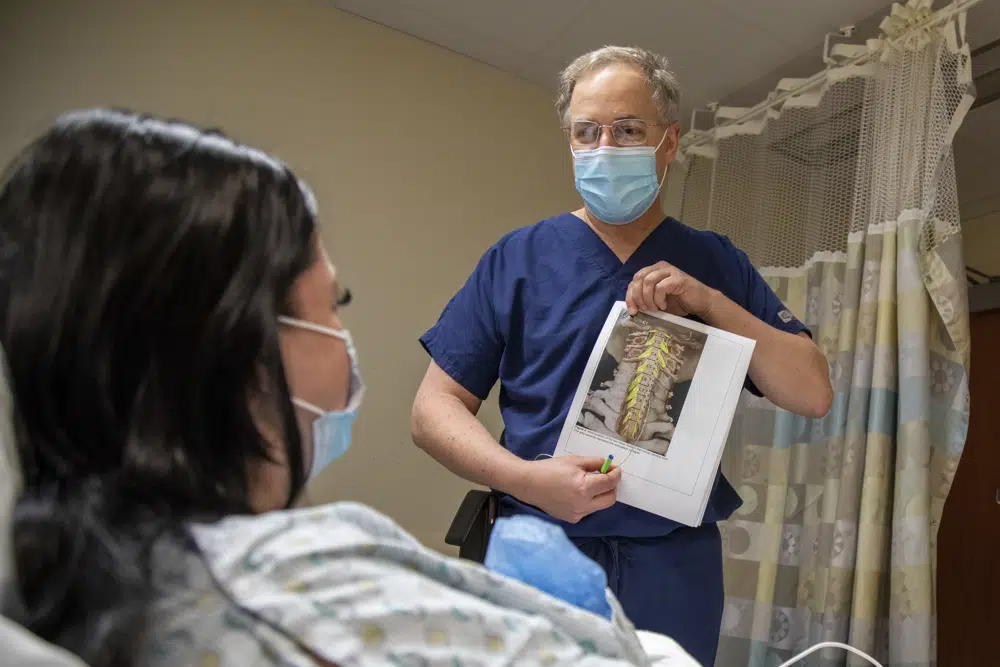Heather Rendulic suffered a stroke that severely impaired the use of her left hand and arm, making it difficult for her to do routine chores like tying shoes or cutting meals.
Pittsburgh resident “I live one-handed in a two-handed world and you don’t know how many things you need two hands for until you only have one decent one,” she said to the AP.
Rendulic consented for a groundbreaking experiment in which a device was inserted in her spinal cord to zap areas responsible for manipulating her arms and hands. After turning it on, she was able to pick up and move things, such as a soup can, unlock a lock, and eventually carve her own steak at the end of the four-week research.
The pilot trial only involved Rendulic and one other stroke victim, thus it is not a cure (improvements stopped once scientists removed the temporary implant). Yet, the promising early findings from Monday’s publication represent progress toward a cure for this exceedingly prevalent kind of paralysis.
They aren’t just seeing fleeting glimpses of motion. Dr. Jason Carmel, a neurologist at Columbia University who was not involved in the latest trial but who researches strategies to improve upper-limb function, said, “They’re getting something essential.” This proof of concept is quite promising.
